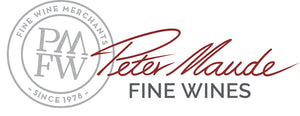Champagne
Champagne is a wine region in northeastern France. Once a key medieval French county shaped by the Marne River valley, the Champagne region is now synonymous with its sparkling wines made using the traditional method (methode traditionelle) – and a glittering line up of names including Dom Pérignon, Krug, Moet & Chandon and Veuve Clicquot. Legally, sparkling wine can only be classified as Champagne if it comes from this wine region, which was given an AOC (Appellation d’Origine Contrôlée) in 1936.
Click here to read more.Champagnes go through a second fermentation process in the bottle, creating carbon dioxide bubbles. The gas build-up adds pressure to the bottles, which occasionally explode, and earning Champagne the nickname of "le vin du diable", or “the devil’s wine.” Produced for more than 1600 years, while Champagne was originally polarising, 17th Century French royalty influenced its rise to fame, focusing the winemaker’s intentions on keeping the bubbles and perfecting production and storage methods.
The Champagne AOC is divided into five legally defined subregions: Montagne de Reims, the Marne Valley, Côtes de Blancs, Côtes de Sézanne and Côtes des Bar. Select and delicious, our Champagnes come principally from the Côte des Blancs – an area named for its Chardonnay grapes, planted in 97% of local vineyards. There are six grand cru villages in Côte des Blancs: Avize, Chouilly, Cramant, Le Mesnil-sur-Oger, Oger and Oiry. The area is revered for its hydrating chalk and limestone soil and 'perfect' climatic growing conditions.
Epernay – the capital city of Champagne – has been producing excellent bubbles since the arrival of Nicolas Ruinart in Reims in 1729, the father of the venerable Champagne house. Today the city is home to the major Champagne wine production and trading houses.
More recently, producers are observing warming of the grape growing climate – causing earlier harvests and less frost damage to vines. This leads to more and sweeter grapes. According to Le Comité Champagne, Champagne was the world's first wine-growing region to measure its carbon footprint.

















